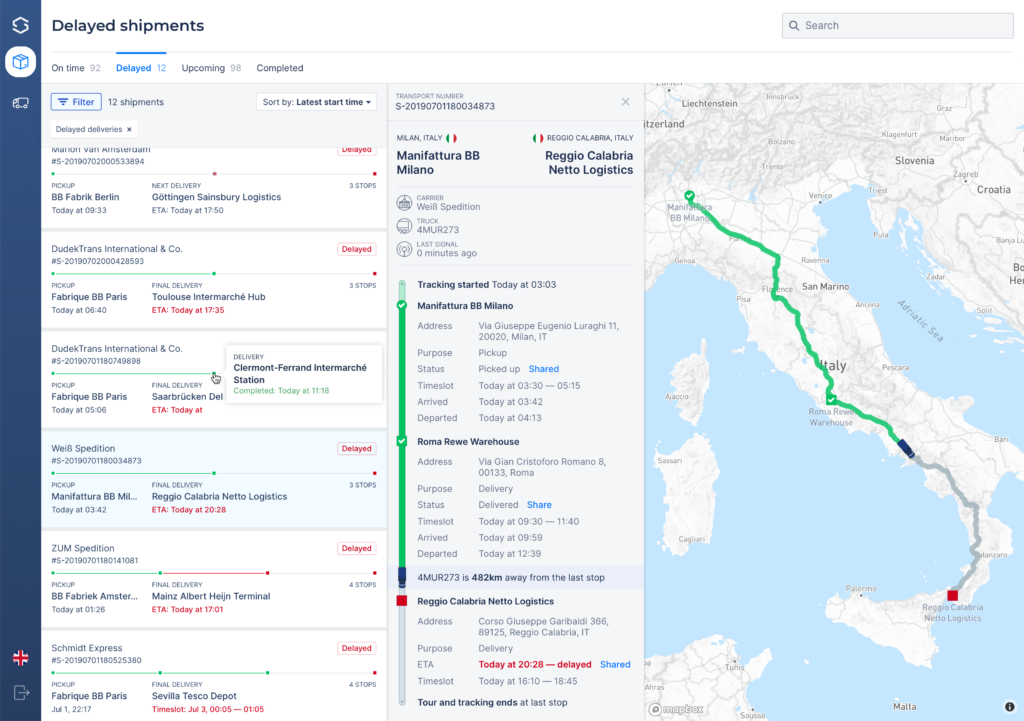Armin Tüll, head of marketing at Sixfold, a provider of real-time logistics visibility platforms for the logistics sector, explores the dawn of the prediction logistics era
Change is happening in the logistics industry. Shippers are under enormous pressure from customers to provide accurate real-time visibility data on shipments from pick-up to delivery. Armed with live logistics data, smart factories can plan just-in-sequence supply chains, warehouses can improve productivity by up to 30%, and retailers will be able to provision shelves better. Every sector of the business spectrum in the coming smart, live data era will profit.
In the past, shipping logistics from A to B was all about pen-and-ink planning with dispatchers reliant on a set of well-trodden trade routes. Now the logistics industry is beginning to get smart.
Last month a survey published by Transporean showed that more than a third of European shippers already regard end-to-end data visibility and the ability to track and trace transports as central to their operations.
Optimizing shipments
According to consultancy firm Bain & Company, shippers with optimized distribution networks can expect up to 10% increases in margins. However, the majority of businesses still think of their supply chains as costs rather than as tools to drive added value and increase efficiency. The cost mindset has to change. By moving goods in an optimized way – improving route and shipment efficiency – manufacturing plants can decrease high levels of inventories while improving operational efficiency.
Three issues still need to be addressed: reducing shadow IT and information silos, breaking free from old school planning, and ditching the spreadsheet.
Of these issues, perhaps the most important is ditching the spreadsheet. Not only do logistics planners contribute to information silos by producing plans in Excel, but they also counteract the mindset of open, transparent workflows so crucial to success in the modern supply chain. Indeed, this type of workflow is emblematic of the organizational structures that result in shadow IT and silo decision making, both of which make a forward-facing and future-oriented supply chain virtually impossible. Under these conditions, businesses get caught up in a cycle of planning based on past events instead of future predictable events, and then scramble to react to unforeseen breakdowns.
Predictive logistics era
Smart logistics is beginning to shape a more advanced conception of the logistics value stream with predictive delivery platforms being integrated into traffic management systems. It marks the dawn of the predictive logistics era where supply chain management and smart technology predicts delays of shipments in transit ahead of time, enabling planners, even autonomous machine processes, to adjust production schedules to meet changes in delivery schedules.
As predictive shipments accelerate, the global value chain will become more complex, relying on advanced predictive algorithms and the integration of more connected elements. The supply chain will become smarter and leaner, offering a more adaptive and agile environment.
The predictive logistics era will allow more data to be circulated more quickly over networks. It will be indispensable for helping to propel autonomous vehicles, large-scale IoT and drones. Other logistics-specific applications such as fleet management and predictive maintenance will benefit and drive greater efficiencies in the supply chain.
In the predictive logistics era, parcels in trailers will be embedded with their own sensor tracking data, such as humidity and temperature. Shippers will then be able to implement infrastructure monitoring, process automation, smart metering and real-time fleet management.
Large carriers and freight forwarders will be the first to benefit from logistics predictive technologies, allowing them to track assets in real time, make informed decisions through detailed data streams and to better engage with customers.
Sixfold’s predictive logistics platform is already beginning to transform Europe’s supply chains as customers enter the smart shipments era and transform their business economics in the process. It also enables shippers to better engage with their customers and become more customer centric.


